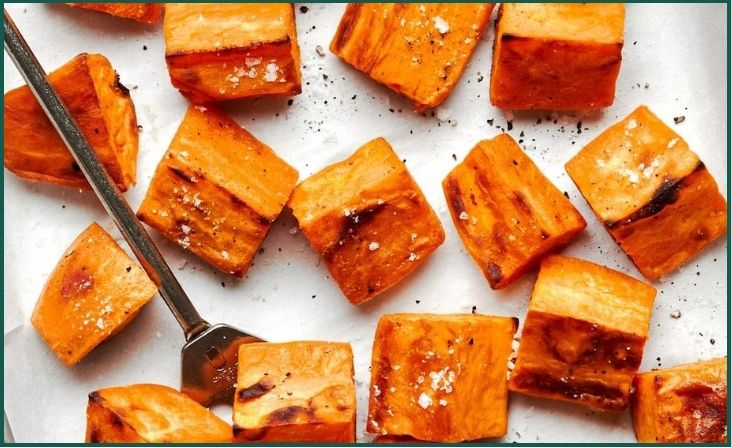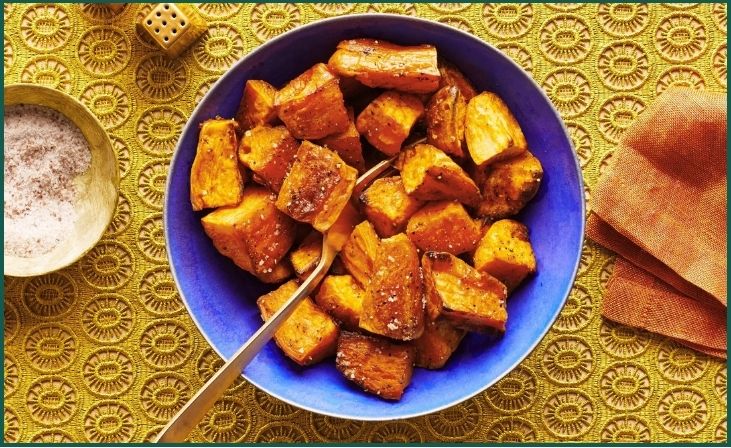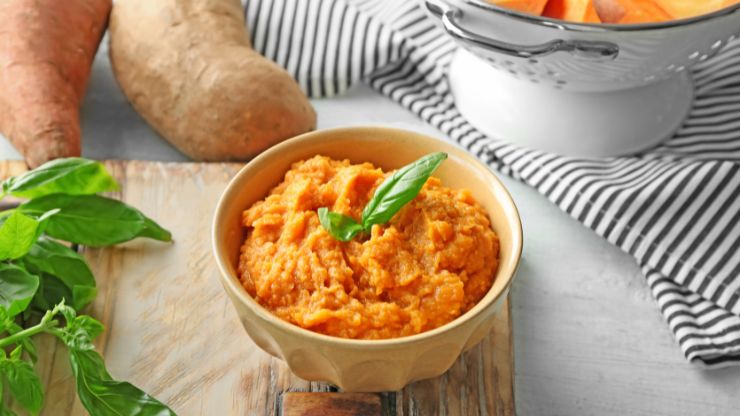Sweet potatoes have risen in popularity due to their delightful taste and numerous health benefits, making them a kitchen essential. Exploring different cooking methods not only amplifies their natural flavors but also unlocks a plethora of delectable dishes. Whether roasted, mashed, baked, or grilled, each preparation method brings out unique textures and aromas, allowing you to experiment with various flavor profiles and culinary styles.
From savory to sweet, sweet potatoes offer versatility in both savory and sweet recipes, making them a versatile ingredient that can elevate any meal. Incorporating sweet potatoes into your cooking repertoire not only adds nutritional value but also adds a delicious and wholesome element to your culinary creations.
Table of Contents
ToggleCook Sweet Potatoes
1. Preheat Your Oven

Before diving into your sweet potato culinary adventure, it’s essential to preheat your oven to 400°F (200°C). This step is crucial as it ensures that your sweet potatoes cook evenly, leading to a dish with a consistently delicious texture. Preheating the oven allows for even distribution of heat, which helps the sweet potatoes to roast perfectly without any uneven cooking. This temperature setting is optimal for achieving that ideal balance between tender and caramelized sweet potatoes.
By taking this simple yet essential step, you set yourself up for success, ensuring that your sweet potato dishes turn out irresistibly flavorful and satisfying. So, before you start cooking, don’t forget to preheat your oven and get ready to enjoy the wonderful flavors of perfectly cooked sweet potatoes.
Read Also: 8 Winter Slow-Cooker Dinners You’ll Want to Make Forever
2. Wash and Dry
Begin your sweet potato cooking process by ensuring your sweet potatoes are clean and free of any dirt or debris. Wash and scrub them thoroughly under cold running water to remove any impurities. Drying them completely with a clean towel is essential as it helps to enhance the flavor and texture of the final dish.
By starting with clean sweet potatoes, you not only ensure food safety but also contribute to a more enjoyable culinary experience. Removing any dirt or residue from the sweet potatoes allows their natural flavors to shine through and prevents any unwanted grittiness in the finished dish. So, take the time to properly clean your sweet potatoes before cooking to set the stage for delicious and satisfying meals.
3. Poke Holes
Before baking your sweet potatoes, it’s important to pierce them all over with a fork. This simple yet crucial step serves multiple purposes in the cooking process. Firstly, poking holes allows steam to escape from the potatoes as they bake. This helps to prevent the buildup of pressure inside the potatoes, reducing the risk of them bursting open during cooking.
Additionally, piercing the sweet potatoes ensures that they cook evenly throughout, as it allows heat to penetrate the flesh more effectively. By creating these small vents with a fork, you can ensure that your sweet potatoes bake uniformly, resulting in tender and flavorful potatoes that are perfect for a variety of dishes. So, don’t skip this essential step before popping your sweet potatoes into the oven.
4. Coat with Oil
To ensure moist and flavorful sweet potatoes, consider coating them lightly with oil before baking. Opt for oils like olive oil or coconut oil, which not only enhance the potatoes’ taste but also help retain moisture during cooking. The oil forms a protective barrier around the potatoes, sealing in their natural juices and preventing them from drying out in the oven.
This results in sweet potatoes that are tender and succulent on the inside, with a slightly crisp and caramelized exterior. Additionally, the oil adds richness to the flavor profile of the potatoes, enhancing their overall taste. So, before placing your sweet potatoes in the oven, take a moment to give them a gentle rub with oil to ensure they turn out perfectly moist and delicious.
5. Season with Salt and Pepper

For an added flavor boost, don’t forget to season your sweet potatoes with salt and pepper. This simple yet effective step can elevate the taste of your dish significantly. However, it’s crucial to find the right balance when seasoning your sweet potatoes to ensure they’re seasoned to perfection. Too little seasoning can result in bland potatoes, while too much can overpower their natural sweetness.
Don't just scroll, subscribe!
BuzzTrail's unique web-stories are the cure for boredom you've been waiting for.
Sprinkling a moderate amount of salt and pepper evenly over the potatoes ensures that each bite is well-seasoned without overwhelming the palate. This allows the natural flavors of the sweet potatoes to shine through while complementing them with just the right amount of savory seasoning. So, before popping your sweet potatoes into the oven, take a moment to season them generously with salt and pepper for a delicious final result.
6. Place on Baking Sheet
Once you’ve prepared your sweet potatoes, it’s time to lay them out on a baking sheet lined with parchment paper or aluminum foil. This step serves two important purposes: it makes cleanup easier and ensures that your sweet potatoes cook evenly. The parchment paper or aluminum foil creates a barrier between the sweet potatoes and the baking sheet, preventing them from sticking and making cleanup a breeze.
Additionally, the even surface provided by the parchment paper or foil helps distribute heat evenly around the sweet potatoes, ensuring that they cook uniformly. This means you’ll end up with perfectly cooked sweet potatoes every time, with no risk of uneven cooking or burnt spots. So, before you pop your sweet potatoes into the oven, be sure to line your baking sheet with parchment paper or aluminum foil for fuss-free cooking and cleanup.
7. Roast in the Oven
Once you’ve prepared your sweet potatoes and laid them out on the baking sheet, it’s time to roast them in the preheated oven. Roasting sweet potatoes at 400°F (200°C) for approximately 45 to 50 minutes ensures they cook to perfection. During this time, the sweet potatoes will become tender and develop a caramelized exterior.
To check for doneness, simply pierce them with a fork; they should be easily pierced when ready. This test ensures that the sweet potatoes are cooked through and soft inside. Keep an eye on them as they roast, as cooking times may vary depending on the size and thickness of the sweet potatoes. Once they’re tender, remove them from the oven and allow them to cool slightly before serving.
8. Let Them Rest

After removing your sweet potatoes from the oven, it’s important to let them rest for a few minutes before serving. This brief resting period allows the sweet potatoes to cool slightly, making them easier to handle. Additionally, it gives the flavors a chance to meld together, resulting in a more harmonious and delicious eating experience.
Resting also allows any remaining steam to escape, preventing the sweet potatoes from becoming too mushy. Once they have cooled slightly, you can serve them as desired, whether as a standalone side dish or as part of a larger meal. By taking this simple step, you ensure that your sweet potatoes are at their best when they reach the table, delighting everyone with their irresistible flavor and texture.
9. Add Toppings
Once your sweet potatoes are cooked to perfection, it’s time to get creative with toppings. This is where you can really make the dish your own by adding your favorite flavors and textures. Whether you prefer the classic combination of butter and brown sugar, the warmth of maple syrup with a sprinkle of cinnamon, or the crunch of chopped nuts, the possibilities are endless.
Experiment with different toppings to find the perfect balance of sweetness, spice, and crunch that suits your taste buds. Adding toppings not only enhances the flavor of the sweet potatoes but also adds visual appeal, making them even more inviting. So go ahead, have fun, and let your imagination run wild as you customize your sweet potatoes to perfection!
10. Use Leftovers
Sweet potatoes are not only delicious when freshly cooked but also versatile when it comes to leftovers. Repurposing them into different dishes like sweet potato fries, a comforting sweet potato casserole, or a traditional sweet potato pie is a fantastic way to make the most out of them. Not only does this reduce food waste, but it also allows you to enjoy sweet potatoes in a variety of forms, each offering its own unique flavor and texture.
Whether you’re craving something savory, sweet, or somewhere in between, there’s a leftover sweet potato recipe to suit your taste preferences. So next time you cook sweet potatoes, consider making extra to enjoy these tasty leftovers and explore the endless possibilities they offer.
Bottom Line
Cooking sweet potatoes is a delightful culinary adventure that opens the door to a myriad of delicious dishes. Whether roasted, baked, mashed, or fried, sweet potatoes offer versatility, flavor, and numerous health benefits. By following the best practices outlined in this guide, you can ensure that your sweet potatoes turn out perfectly cooked and bursting with flavor every time. From simple seasoning to creative toppings, the possibilities are endless when it comes to enjoying this nutritious and versatile root vegetable.
FAQs
What are the health benefits of sweet potatoes?
What are the health benefits of sweet potatoes?
Sweet potatoes are packed with nutrients like vitamins A and C, fiber, and antioxidants. They promote gut health, support vision, and boost immunity.
Can I eat the skin of sweet potatoes?
Can I eat the skin of sweet potatoes?
Yes, the skin of sweet potatoes is edible and nutritious. Just make sure to wash them thoroughly before cooking to remove any dirt or debris.
How should I store leftover cooked sweet potatoes?
How should I store leftover cooked sweet potatoes?
Store leftover cooked sweet potatoes in an airtight container in the refrigerator for up to 4-5 days. They can also be frozen for longer-term storage.

